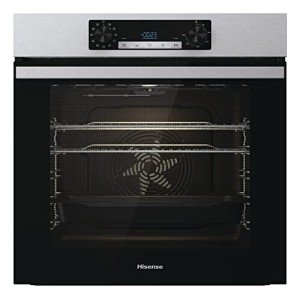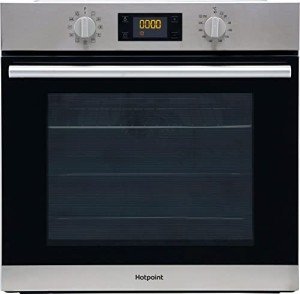 What Is a single electric oven with grill Oven Electric Fan?
What Is a single electric oven with grill Oven Electric Fan? A single gas oven oven electric fan is an appliance that circulates hot air evenly through the oven cavity by using an internal fan. This can help remove hot spots and enhance the overall cooking performance.
A single gas oven oven electric fan is an appliance that circulates hot air evenly through the oven cavity by using an internal fan. This can help remove hot spots and enhance the overall cooking performance.Does your oven has an air-conditioner? If so, will this make certain areas of your oven cooler or warmer than others when you set the temperature?
Functions
Oven functions (also called cooking modes or setting) offer a variety pre-programmed options to cater for an array of recipes and cooking needs. These features dictate how the heating elements and fan inside the oven function and help achieve exact and consistent results.
Most ovens are classified as 'fan assisted', which means at the same time as the oven element heats up, there is a fan that circulates hot air around the oven's cavity to assist in cooking food. As a result, this function speeds up the preheating process and provides an even cooking experience. In an oven, there are typically two fans: one that circulates hot air for cooking, and another that cools down the oven. The cooling fan is controlled by a thermal switch. It will turn on automatically when the thermostat knob isn't turned off.
Functionality for Convenience
Ovens come with a variety of features that make it easier to use them, including the defrost feature that makes use of low temperatures to melt frozen food without cooking it. This speeds the process of defrosting and prevents dishes from becoming overcooked or dry. The reheating mode is useful as it uses the gentle heat to reheat food items, allowing them to retain their flavour and texture.
Other useful features include a child lock feature that locks the control panel, preventing children from gaining access or altering the oven's settings. The minute minder function is another feature that can be used independently of the cooking functions. It switches off the oven after the specified amount of time has passed. This will help you not forget to turn it off.
A multi-function oven is perfect for those who like to cook a variety of dishes frequently. A fan oven with a roast function allows you to cook various meats and vegetables on multiple racks simultaneously, making it perfect for Sunday lunches or family meals. There are also grill and bake functions that make great additions to the appearance of a golden crust to casseroles, potatoes and cakes.
Design
built under single oven with grill-in electric single ovens are available in different sizes and styles that will suit your kitchen's needs. Some models have additional functions like self-cleaning, delaying start or warm hold. These functions can be a great way to save time and effort in the kitchen. Read reviews to get an idea of how these ovens are rated by other customers.
A fan oven has an air circulator inbuilt which allows for more even cooking and quicker results than a traditional oven. This is especially useful for cooking dishes with a high fat content like pies and roasts. You can tell if an oven is fan-based by looking at the control panel. Look for a three-pronged or inp-02.com fan icon, which is enclosed by an elongated circle. Conventional ovens can be identified differently or lack a fan at all.
Blomberg's A-rated integrated single oven comes with a capacity of 71L. It is designed for performance and looks. The oven electric single comes with a comprehensive set of presets including grill and fan assisted cooking. It also comes with a special light-only mode for ease of cleaning. It also comes with an adjustable clock/timer that can be programmed with a touch and a clean enamel interior.
Energy Efficiency
Ovens are comparatively low-energy appliances compared to other household appliances such as refrigerators and air conditioners. However, the kind of oven and the cooking method used can still influence the energy bills. A lot of the modern single ovens are more energy-efficient than older models. This means less energy usage and can save you money on your utility bill.
The main difference between a traditional and fan oven is that a traditional oven is only one heating element, while a fan oven has both heating elements and a fan that circulates hot air around the food. By using a fan, you can lower the temperature and conserve energy. Additionally, a fan can help to reduce baking time.
Another method to ensure you're getting an oven electric fan that's as efficient as it can be is to look for one that has a brushless DC motor. This type of motor is more energy efficient than models that are not brushless. It also reduces noise levels.
You can find the energy rating in the manual for the appliance or elsewhere. This number will give you an idea of the amount of energy the oven consumes operating. You can then compare it with the cost per kWh of your electricity tariff, which can vary greatly based on the area you live in.
The type of food that you cook the temperature you set, as well as the length of time you cook can all impact the amount of energy your oven consumes. The cooking process itself may affect the amount of electricity it uses and so will heating the oven prior to using it.
To maximize the energy efficiency of your oven, turn it off after you're done using it and Best single Oven under £300 keep track of your usage. Smart meters can provide you with exact information on the amount of energy your appliances consume. You can also research other cooking methods that use less energy.
Installation
Whether you're installing an electric fan oven for the first time or replacing an existing one there are a few costs to consider. These range from getting rid of and removing the old appliance and installing or upgrading outlets and utilities lines. If the new appliance is requiring vent hoods you might need to install one. Prices for labor vary among contractors, so you should shop around for the best deal.
It is easy to determine the oven that you bought has a fan since it will likely be marked as fan on the control panel. The fact that it has fans means that air circulates constantly within the oven's chamber, allowing it to heat up quicker and distribute heat evenly. On the control panel of conventional ovens, you may see an alternative icon or no fan icon.
Before you employ an electrician to install your new single oven electric fan, be sure to look at how the unit was wired in your home before. If the old one plugs in directly to a power socket and is plugged into a power socket, it should be very simple for a professional to wire it into your wiring system. If the older oven is hard-wired to a circuit breaker or switchbox, it is more difficult. If the new unit is more powerful than the older, you'll need to make sure that your circuit breakers are able to handle the extra current. It is also important to ensure that any cables used are of sufficient size.
The cost of installation will also differ depending on where your kitchen is located in your home. A freestanding oven that can be moved easily from room to room is more affordable than a wall-mounted unit which requires cutting into cabinetry or a countertop to put built in single fan oven. You should also factor in the cost of additional equipment if you have to add or run gas or electricity lines or ductwork for ventilation.
If you're replacing a unit that is already installed, a basic electric oven installation isn't going to cost you more than $70 to $155. Adding a new outlet to the kitchen will increase the price by around $200, and installing a vent hood could increase the cost by about $300. 📌 Ask Me Anything: 10 Responses To Your Questions About Single Oven Electric Fan

